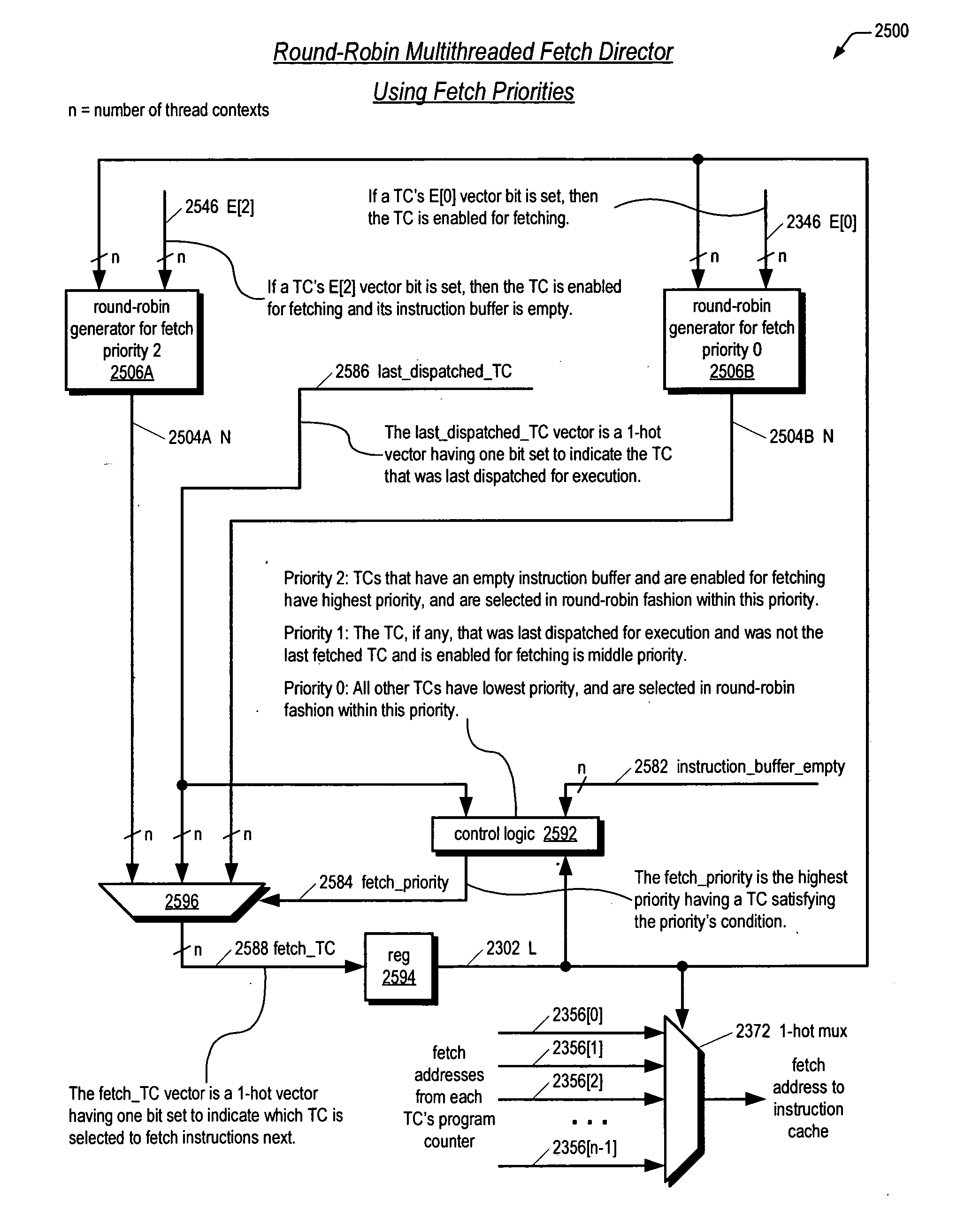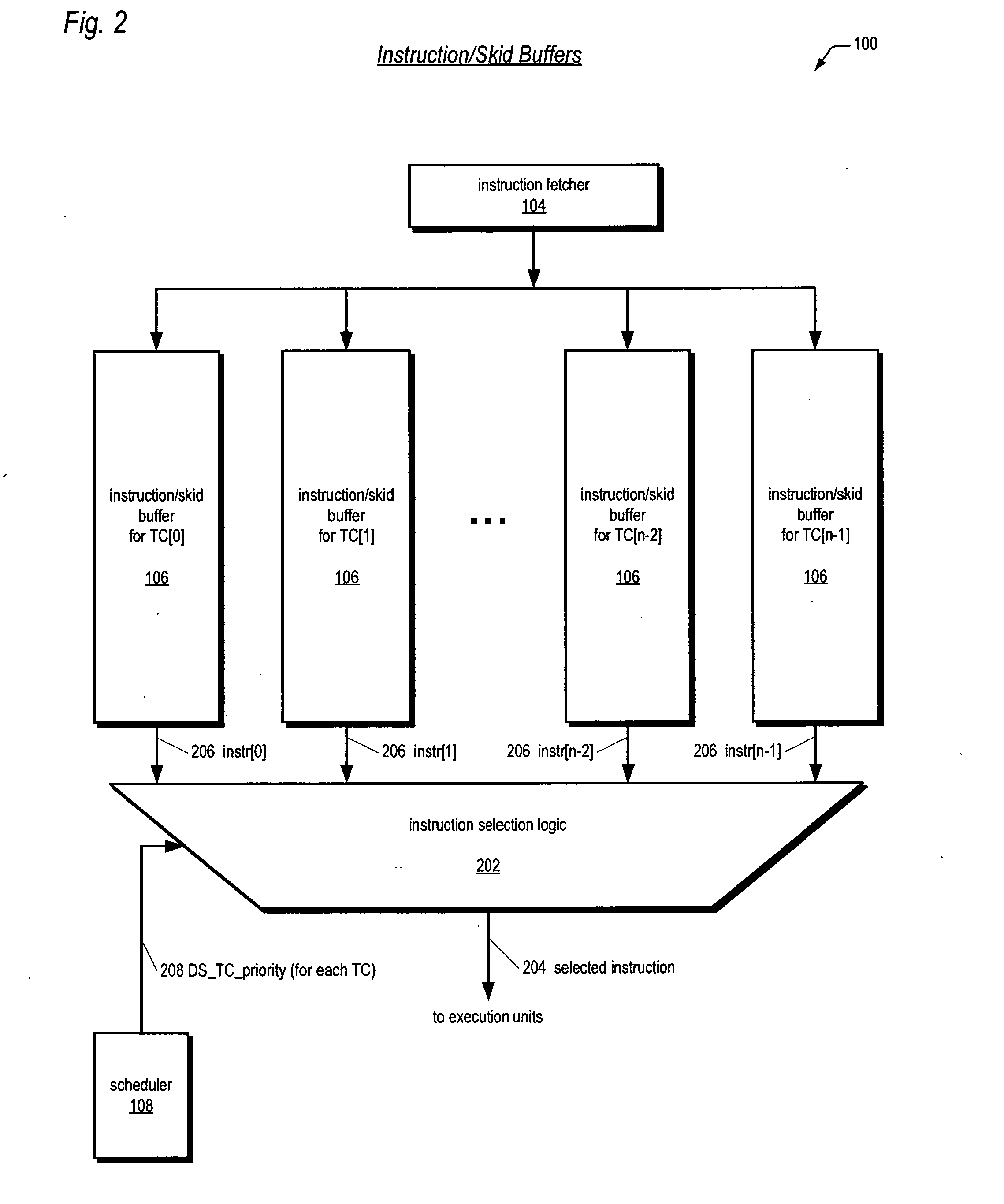Fetch director employing barrel-incrementer-based round-robin apparatus for use in multithreading microprocessor
a multi-threaded microprocessor and fetch director technology, applied in the field of round-robin fairness methods, can solve the problems of affecting the performance of the fetch director, the pipeline stage of the single-threaded microprocessor may be idle performing no useful work for many clock cycles, and the performance improvement that may be achieved through exploitation of instruction-level parallelism is limited
- Summary
- Abstract
- Description
- Claims
- Application Information
AI Technical Summary
Benefits of technology
Problems solved by technology
Method used
Image
Examples
Embodiment Construction
[0046] Referring now to FIG. 1, a block diagram illustrating a pipelined multithreading microprocessor 100 according to the present invention is shown. The microprocessor 100 is configured to concurrently execute a plurality of threads. A thread—also referred to herein as a thread of execution, or instruction stream—comprises a sequence, or stream, of program instructions. The threads may be from different programs executing on the microprocessor 100, or may be instruction streams from different parts of the same program executing on the microprocessor 100, or a combination thereof.
[0047] Each thread has an associated thread context (TC). A thread context comprises a collection of storage elements, such as registers or latches, and / or bits in the storage elements of the microprocessor 100 that describe the state of execution of a thread. That is, the thread context describes the state of its respective thread, which is unique to the thread, rather than state shared with other threa...
PUM
 Login to View More
Login to View More Abstract
Description
Claims
Application Information
 Login to View More
Login to View More - R&D
- Intellectual Property
- Life Sciences
- Materials
- Tech Scout
- Unparalleled Data Quality
- Higher Quality Content
- 60% Fewer Hallucinations
Browse by: Latest US Patents, China's latest patents, Technical Efficacy Thesaurus, Application Domain, Technology Topic, Popular Technical Reports.
© 2025 PatSnap. All rights reserved.Legal|Privacy policy|Modern Slavery Act Transparency Statement|Sitemap|About US| Contact US: help@patsnap.com



